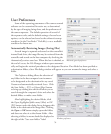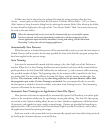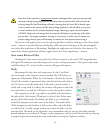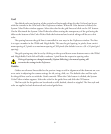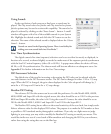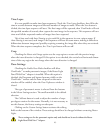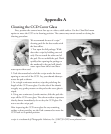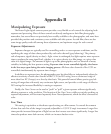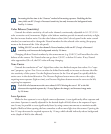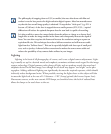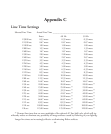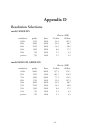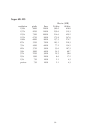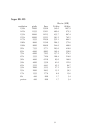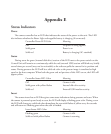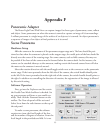
86
Increasing the line time is the “cleanest” method of increasing exposure. Doubling the line
time yields one EV (f-stop) of increased sensitivity, but only increases the background noise
level by 1.4 times.
Color Balance (Sensitivity)
Controls the relative sensitivity of each color channel; continuously adjustable in 0.1 CC (1/10
color correction unit) increments. Higher color balance numbers provide increased sensitivity to light,
but also increase shadow noise. Use the color balance editor (the Color tab panel in the main control
window) to examine and/or change the Neutral numbers for the selected color setting (the popup
menu at the bottom of the Color tab panel).
Adding 30.0 CC to each color channel’s Neutral number yields one EV (f-stop) of increased
sensitivity, and increases the background noise by 2.0 times.
Changing all three Neutral numbers by the same amount (e.g. 30.0 CC) will not affect the color
balance of the camera. No Neutral value can go above 130 CC or below 0.0 units. If any Neutral
value approaches130 or 0, the ISO value will stop changing.
Tone Curves
Controls the translation of “raw” digital data values into finished output data values. For “expo-
sure” purposes, a given Tone Curve can often be shifted horizontally to increase or decrease the effec
-
tive sensitivity of the system. Use the Brightness buttons (in the Tone tab panel) to quickly shift the
entire curve in the desired direction. e Decrease Brightness button moves the curve to the right,
requiring more exposure (light or time), and Increase Brightness button moves the curve to the left,
requiring less exposure.
Each click of a button moves the curve about 0.2 EV. Moving the curve 1 EV to the left
decreases the required exposure by 1 f-stop (lightens the image), and increases image noise
by 2.0 times.
Lens Aperture
While the lens aperture is not a digital camera adjustment, it can significantly affect exposure and
scan times. Aperture is usually adjusted for the desired depth of field, often at the expense of expo
-
sure. It may be possible to scan significantly faster by using camera movements to maximize usable
depth of field and then opening the lens somewhat to allow more light into the camera. Opening the
lens 1 f-stop decreases the required exposure by 1 f-stop, which should indirectly reduce background
noise (depth of field is also affected).



